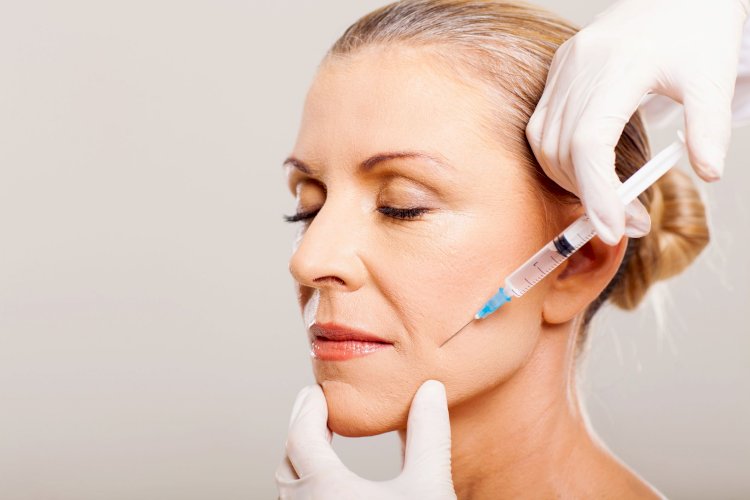A Detailed Article On Botox And Its Effects As A Treatment
Botox is effective for many. Why is it so? Know all about Botox treatment here.

Image Credits: Getty Images
What Is Botox?
To treat wrinkles and facial creases, botox is a drug doctor has been using for years. The brand name of a toxin made by the bacterium Clostridium botulinum is botox. Many other brands include Dysport as well as Xeomin. As it was the first injectable botulinum toxin, botox is the term you hear most often.
How Is Botox Used?
To reduce the appearance of facial wrinkles is the most common reason doctors use Botox. Helping treat other conditions is by getting a botox shot such as:
Hyperhidrosis where it comes with severe underarm sweating
A neurological disorder that causes severe neck and shoulder muscle spasms called cervical dystonia.
Blepharospasm where blinking that you can’t control
Strabismus where eyes that point in different directions
Chronic migraine
Finally, an overactive bladder.
How Does Botox Work?
Blocking signals from the nerves to the muscles is botox. Here the injected muscles can’t thereby contract. It makes the wrinkles relax and soften.
Most often used on forehead lines, crow’s feet which are lines around the eye as well as frown lines are botox. Caused by sun damage or gravity, botox won’t help with them.
How Is A Botox Procedure Done?
Taking only a few minutes is getting botox. You probably do not need anaesthesia. To inject botox into specific muscles with only minor discomfort the provider uses a small needle.
To take full effect, it generally takes 7 to 14 days. Starting at least 1 week before the procedure, it is best to avoid alcohol. 2 weeks before the treatment to help prevent bruising, you should also stop taking aspirin and anti-inflammatory medications.
So that you don’t spread the Botox to another area, avoid rubbing the injection site for 24 hours. It is always observed that the doctor suggests you stay upright for 4 hours after the shots and take a day off from exercising.
How Long Does A Botox Shot Last?
Usually lasting 3 to 6 months are the effects of Botox. Needing to be treated again as muscle action slowly returns along with the lines and wrinkles beginning to reappear. As the muscles are shrinking, the lines and wrinkles often appear less severe with time.
What Are The Side Effects Of Botox?
After a Botox injection, you may have some temporary side effects. Here it includes:
Bruising which is the most common side effect and they will go away.
Headaches that are typically rare and end in 24 to 48 hours.
Eyelid drooping. Usually going away within 3 weeks, this happens with only a small percentage of people. Don’t rub the treated area as it usually happens when the Botox moves around.
Crooked smile or drooling
Eye dryness or severe tearing
Mild pain or swelling around the injection site
Flu-like symptoms or a general unwell feeling
Upset stomach
Numbness
Lastly, weakness in nearby muscles
Who Should Not Get Botox?
Those people should not use Botox in case they are pregnant, breastfeeding, or have a neurological disease. Check with a doctor first as botox doesn’t work for all wrinkles.
If you are allergic to cow’s milk protein, you shouldn’t have botox shots.
Will Health Insurance Pay for Botox?
When used for cosmetic purposes, Botox isn’t covered by insurance. For coverage details, check with your health insurance company.
Armpit Injections Reduce Sweating, Smelly Bacteria
Botox injections can reduce body odour by shutting down sweat glands as a new study shows.
A bacterial toxin that paralyses the tight muscles that cause wrinkles, botox has been tested for other uses that include headaches and haemorrhoids.
A group of German researchers investigated the effect Botox has on sweat glands in this study. In the January issue of the Archives of Dermatology, the results are published.
Lead researcher Marc Heckmann, MD, a dermatologist with Ludwig-Maximillian-University in Munich writes that three types of sweat glands along with skin surface bacteria produce the pungent smell associated with body odour.
Ranging from age 18 to 51 are the 16 volunteers in his study. Without any deodorant or perfume, each wore a new, white cotton T-shirt for 24 hours from noon until noon. For two days before and during the study, they were also instructed not to eat asparagus, onions, or garlic or to have close personal contact with their partners.
The Concluding Results
Under one armpit, each volunteer was injected with Botox. They were injected with a saline solution for comparison under the other armpit. It was not allowed to use deodorant or antiperspirant.
The researchers repeated the sniff test after seven days. Volunteers rated the Botox armpits significantly lowering for odour intensity compared to the other arm this time. For pleasantness too they gave higher ratings. Significantly dryer was the Botox armpits.
What's Your Reaction?




















